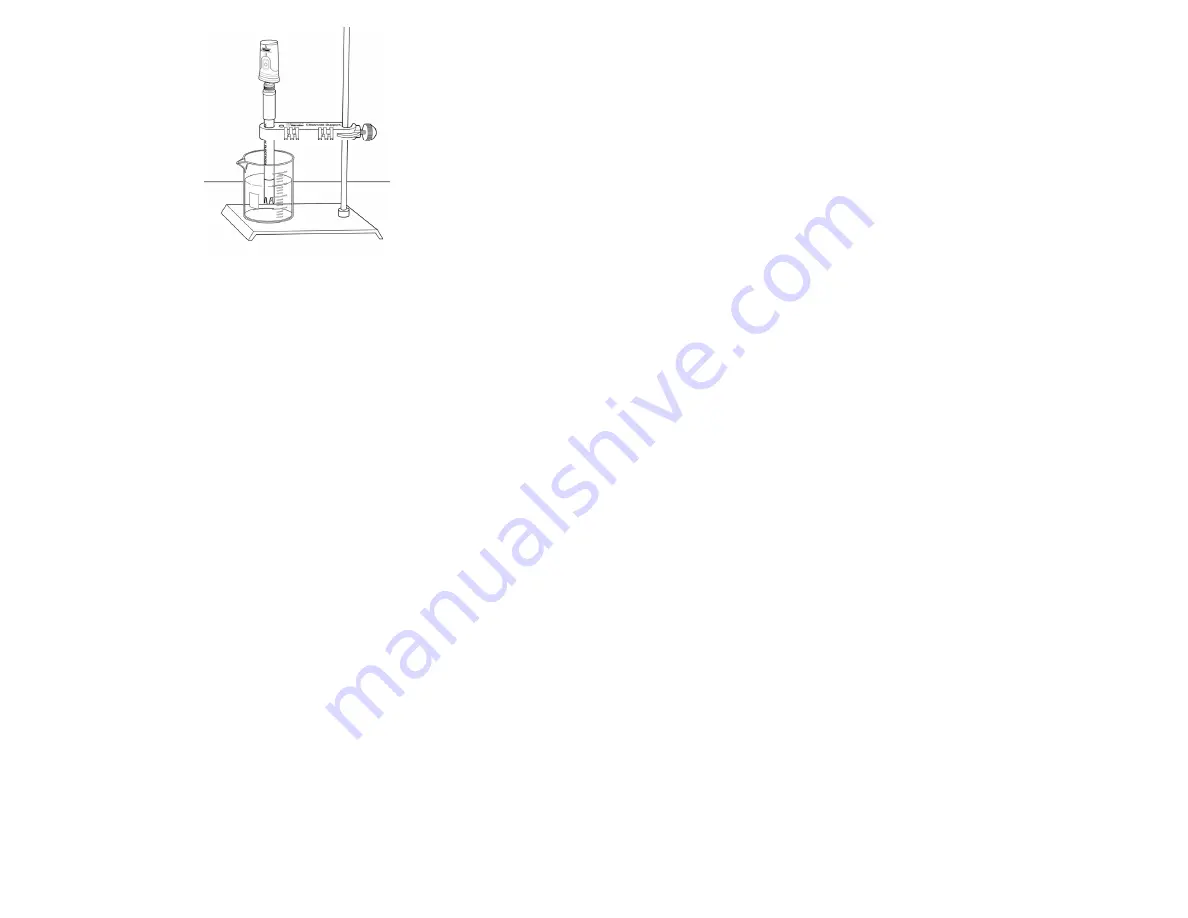
5
4. Tap Keep to store a data point into the table. You can change the sample
description or add a note here. Tap Done.
5. Rinse the tip of the Go Wireless pH with distilled water before reusing it.
6. Collect additional data as desired. Rows will continue to add to the table.
Collecting Data with LabQuest 2 App
1. Press the power button on Go Wireless Electrode Amplifier to turn it on. The
LED on the sensor will flash red.
2. Choose New from the File menu. On the Meter screen, choose Go Wireless Setup
from the Sensors menu. Select your Go Wireless pH from the list of available
sensors. When the sensor is paired with the software, the sensor LED will flash
green.
Note:
To collect data in mV, tap on the red box on the Meter screen, select Go
Wireless, then select Set Units, then mV.
3. Collect data as desired.
When you are finished making measurements, rinse the electrode with distilled
water. Slide the cap onto the electrode body, and then screw the cap onto the storage
bottle so the tip of the electrode is immersed in the storage solution. When the probe
is not being stored in the storage bottle, it can be stored for short periods of time (up
to 24 hours) in pH 4 or pH 7 buffer solution. It should never be stored in distilled
water.
Make sure you disconnect the Go Wireless pH from its Bluetooth pair.
Calibration Information
For many experiments, calibrating the Go Wireless pH is not required. We store a
calibration equation on each pH sensor before shipping it, which is used as a default
by our software.
For the most accurate measurements with this sensor, we recommend calibration. It
is a simple process that takes only a few minutes. You will need two or three buffer
solutions.
Calibrate the Go Wireless pH Using Go Wireless App
1. Press the power button on Go Wireless Electrode Amplifier to turn it on. The
LED on the sensor will flash red.
6
2. Launch the app. Select your Go Wireless pH from the list of available sensors.
When the sensor is paired with the software, the sensor LED will flash green.
3. To enter the calibration screen on the app, tap on the radio icon in the upper right
corner. Choose Calibrate pH.
4. Remove the storage bottle from the Go Wireless pH, rinse the tip of the electrode
with distilled water, pat dry, and place the electrode in the first buffer solution so
the tip is immersed.
5. Once the voltage reading has stabilized, tap Add in the box under the appropriate
buffer pH.
Note:
If you are using a buffer not shown, tap on the buffer value to
change.
6. Repeat this process for two or three buffer solutions. Your stored calibration
equation will be shown under the table.
7. Tap Save to save to sensor.
After you store a calibration to the Go Wireless pH, this new calibration will be used
automatically, regardless of the device to which the Go Wireless pH is connected.
You can set the Go Wireless pH back to its factory calibration by following these
steps:
1. Tap on the radio icon in the upper right corner.
2. Tap Restore Factory Defaults.
Calibrate the Go Wireless pH Using LabQuest App
1. Connect the Go Wireless pH to your LabQuest. The pH reading will be displayed.
2. Choose Calibrate
GW: pH from the Sensors menu and tap Calibrate Now.
3. Remove the storage bottle from the Go Wireless pH, rinse the tip of the sensor
with distilled water, pat dry, and place the sensor in the first buffer solution so the
tip is immersed.
4. Enter the pH of the buffer solution as the known value for Reading 1. When the
voltage reading stabilizes, tap Keep.
5. Rinse the pH sensor with distilled water, pat dry, and place it in the second buffer
solution.
6. In the Reading 2 field, enter the pH of the second buffer solution. When the
voltage reading stabilizes, tap Keep.
7. Tap OK to complete the calibration process.
After you store a calibration to the Go Wireless pH, this new calibration will be used
automatically, regardless of the interface to which the pH Sensor is connected.
pH Buffer Solutions
In order to calibrate a Go Wireless pH, or to confirm that a saved pH calibration is
accurate, you should have a supply of pH buffer solutions that cover the range of pH
values you will be measuring. We recommend buffer solutions of pH 4, 7, and 10.
Vernier sells a pH buffer kit (order code PHB). The kit contains four tablets each
of buffer pH 4, 7, and 10 and a small bottle of buffer preservative. Each tablet is
added to 100 mL of distilled water to prepare respective pH buffer solutions.
Flinn Scientific (www.flinnsci.com, Tel: 800-452-1261) sells a wide variety of
buffer tablets and prepared buffer solutions.





